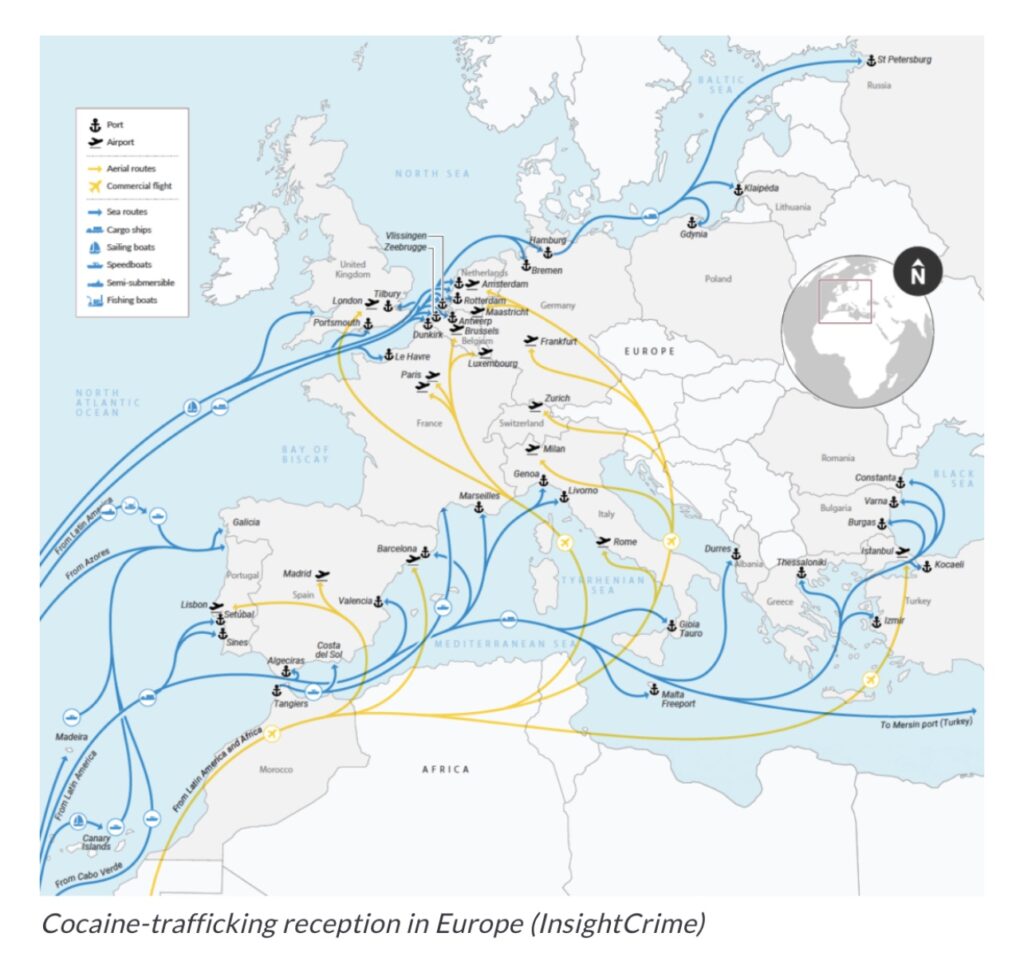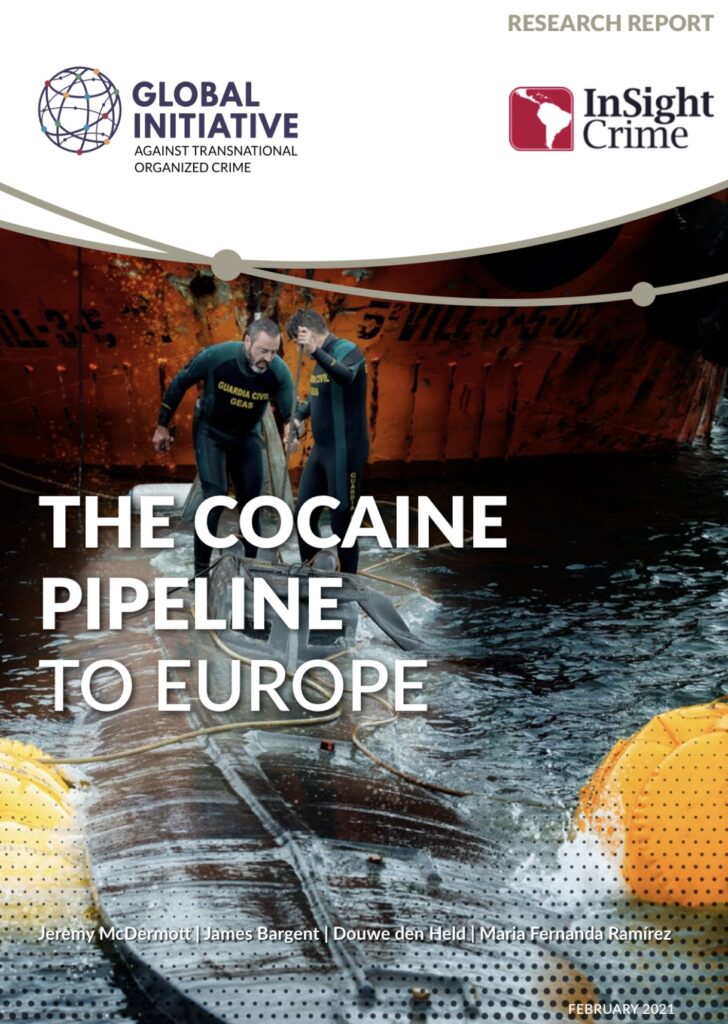The Cocaine Pipeline to Europe
The world is change and so is the underworld.
Over the past few years, the cocaine trade has enjoyed an unprecedented boom, fuelled by soaring production. In 2018, the combined production for Colombia, Bolivia and Peru – the three main producers of cocaine – was more than double that of 2013. While the rate of growth has slowed of late, there is still no sign of it hitting a peak.

The cocaine trade is now populated by a variety of different types of criminal syndicates, which are made up of many different and mixed nationalities. There are no longer criminal structures like the Medellín Cartel, which controlled cocaine production in Colombia and sold their drugs on the streets of Miami and New York. Criminal networks today rely on subcontracting out much of the work to different transport specialists, assassins for hire, corruption nodes and money launderers, as well as legal actors such as lawyers, accountants and bankers. Different criminal nodes will align for a particular shipment, then drift apart, searching for new opportunities and trafficking constellations.

The world of organized cross-border crime is developing fast and it has been accelerated by the Covid-19 corona virus pandemic.
Read more in a report That has been jointly produced by InSight Crime and the Global Initiative Against Transnational Organized crime, you can get the report here: The Cocaine Pipline to Europe
You must be logged in to post a comment.